This is the first installment in a series of papers to educate the new prepper about what weapons they should have on hand. I’m approaching this from a SHTF scenario and while I’m not advocating using any firearm in an offensive manner, I stress that being able to use one to defend yourself is imperative… so when I use terms like battle rifle or stopping power, keep the defensive mindset. One term, however, you will not hear me use is “assault weapon.” This term was coined by the left wing gun grabbers and it does a disservice to any firearm platform to call them that. Keep in mind, we have a defensive mindset and “assault” is an act of aggression… and the last thing we need is our own ranks badmouthing our guns.
The first, and probably most important gun to consider is the carbine. It is the main infantry weapon for every military force on the planet for good reason.… shotguns, handguns, and plinkers have a purpose and place in the survivalist armory (and we’ll get there) but for ability to reach out and touch something with a high rate of fire, you just can’t beat a carbine. Just like any other type of firearm, there are quite a few carbine platforms on the market to choose from… and even more companies that make them. For simplicity sake, I will stick with the most common platforms and the most common calibers.… but keep in mind, this analysis isn’t complete and you should find a gun you like and stick with it.
To analyze/compare carbines, lets think of what one is used for: it’s both a defensive weapon and hunting rifle. So it must function well as a CQB (close quarter battle) weapon and have reasonable accuracy out to several hundred yards. Now let’s consider the round it shoots. In an urban environment, a carbine should be able to kill a deer sized animal with a well placed shot… and shoot through a sheetrock wall still packing enough power to educate an assailant about the difference with cover and concealment. Now consider if you have to bug out on foot… you may have to carry your carbine (and ammunition and magazines) quite a long way. And if you plan to cache several of them or must choose between storage food and a gun, cost could be a problem depending on your choice of weapon. So lets take a look at the major platforms on the market and analyze them based up accuracy, stopping power, weight, cost, ammunition availability, and overall acceptance as a battle rifle.
AR-15 (and its clones)
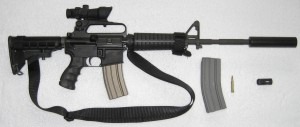 When most people think of a carbine, they think of an AR-15. If you were to choose one as your primary defense weapon, you wouldn’t be unhappy. From its controversial military introduction in the Viet Nam era to the star wars guns you see on the market now, the AR is a proven platform that just seems to be getting better with time. There are a wide range of configurations of the platform (20″ heavy target barrel, 16″ barrel m4, flat top, left hand, the list goes on) so you can find one that fits your needs and body structure. There are currently countless manufacturers selling AR’s or AR components so parts, magazines, and accessories are readily available. It has a low recoil despite the supersonic round and its light weight. Its shoots a very common caliber so stocking up on ammo shouldn’t be a problem (but keep the caveat in mind that in times of need, the common calibers are the first to fly off the shelves). It has decent accuracy over long range and is equally adept at close range. But the AR platform does have drawbacks. The .223/5.56 round is quite frankly underpowered round, especially in an urban environment. It lacks the ability to shoot through much more than a window curtains and retain its shape and terminal ballistics… car doors, refrigerators, even sheetrock, will deform the bullet considerably and diminish penetration into the intended target. And as a hunting round, it lacks the knockdown power necessary to drop a deer in its tracks (unless you’re capable of reliable headshots) so the ability to track wounded game is a necessary skill. The accuracy that is such a benefit on open fields is unnecessary for the 25 or 50 yard shots you would commonly need to take in an urban environment… and the flash sight picture (aka battle sight index) on an AR doesn’t lend itself to defensive accuracy much past 10 yards. Also, keep in mind, in comparison to many of the other battle rifles listed here, it ranks right up there in terms of cost (approximately $1000 for a base model). My overall rating of the AR-15 for the suburban prepper would be an A…it will get the job done well, but has a few drawbacks the operator must understand and work around.
When most people think of a carbine, they think of an AR-15. If you were to choose one as your primary defense weapon, you wouldn’t be unhappy. From its controversial military introduction in the Viet Nam era to the star wars guns you see on the market now, the AR is a proven platform that just seems to be getting better with time. There are a wide range of configurations of the platform (20″ heavy target barrel, 16″ barrel m4, flat top, left hand, the list goes on) so you can find one that fits your needs and body structure. There are currently countless manufacturers selling AR’s or AR components so parts, magazines, and accessories are readily available. It has a low recoil despite the supersonic round and its light weight. Its shoots a very common caliber so stocking up on ammo shouldn’t be a problem (but keep the caveat in mind that in times of need, the common calibers are the first to fly off the shelves). It has decent accuracy over long range and is equally adept at close range. But the AR platform does have drawbacks. The .223/5.56 round is quite frankly underpowered round, especially in an urban environment. It lacks the ability to shoot through much more than a window curtains and retain its shape and terminal ballistics… car doors, refrigerators, even sheetrock, will deform the bullet considerably and diminish penetration into the intended target. And as a hunting round, it lacks the knockdown power necessary to drop a deer in its tracks (unless you’re capable of reliable headshots) so the ability to track wounded game is a necessary skill. The accuracy that is such a benefit on open fields is unnecessary for the 25 or 50 yard shots you would commonly need to take in an urban environment… and the flash sight picture (aka battle sight index) on an AR doesn’t lend itself to defensive accuracy much past 10 yards. Also, keep in mind, in comparison to many of the other battle rifles listed here, it ranks right up there in terms of cost (approximately $1000 for a base model). My overall rating of the AR-15 for the suburban prepper would be an A…it will get the job done well, but has a few drawbacks the operator must understand and work around.
AK47 (and its clones)
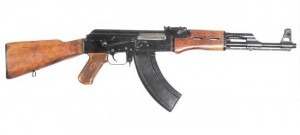 Just as an American would think of an AR-15 when they think of a carbine, someone from eastern Europe would think of an AK. The AK is probably the most manufactured and widely distributed battle rifle in the world… and for good reason. The 7.62x39 round is an effective, heavy hitting round for an urban environment. It has the ability to punch through thin metal, walls, glass, etc while retaining its shape and much of its terminal energy. And the 30 caliber projectile does a great job taking down deer size animals. The guns ability to run while hot, dirty, or in pieces is nothing short of legendary (yes, I said in pieces… I’ve run mine with the dust cover laying at my feet). The gun is on the light side as is its ammunition so carrying it over long distances isn’t too much of a chore. The AK and its ammunition are historically inexpensive ($400) so you have the ability to buy several and arm your family members, to cache them at retreat locations, or simply have a spare… or just buy only one and spend the rest of your budget on beans and bullets. The battle sight index on an AK allows for fast sight acquisition and target picture… and the accuracy in close range rivals an AR. However, on the “con” side of things, the AK doesn’t have a very good sight system for long range shooting (short sight radius with limited adjustments) and accuracy past 100 yards suffers. Also, the guns aren’t very ergonomical… they have a short stock which makes it uncomfortable for a person of large stature to operate… and the safety must be manipulated by removing one hand from the firing grip. Overall, I would rate the the AK47 the same as an AR, A… it will get the job done well, but has its drawbacks.
Just as an American would think of an AR-15 when they think of a carbine, someone from eastern Europe would think of an AK. The AK is probably the most manufactured and widely distributed battle rifle in the world… and for good reason. The 7.62x39 round is an effective, heavy hitting round for an urban environment. It has the ability to punch through thin metal, walls, glass, etc while retaining its shape and much of its terminal energy. And the 30 caliber projectile does a great job taking down deer size animals. The guns ability to run while hot, dirty, or in pieces is nothing short of legendary (yes, I said in pieces… I’ve run mine with the dust cover laying at my feet). The gun is on the light side as is its ammunition so carrying it over long distances isn’t too much of a chore. The AK and its ammunition are historically inexpensive ($400) so you have the ability to buy several and arm your family members, to cache them at retreat locations, or simply have a spare… or just buy only one and spend the rest of your budget on beans and bullets. The battle sight index on an AK allows for fast sight acquisition and target picture… and the accuracy in close range rivals an AR. However, on the “con” side of things, the AK doesn’t have a very good sight system for long range shooting (short sight radius with limited adjustments) and accuracy past 100 yards suffers. Also, the guns aren’t very ergonomical… they have a short stock which makes it uncomfortable for a person of large stature to operate… and the safety must be manipulated by removing one hand from the firing grip. Overall, I would rate the the AK47 the same as an AR, A… it will get the job done well, but has its drawbacks.
M1A
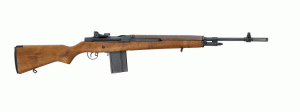 The M14 is a proven battle rifle still in use by the US military today (though not as a primary issue firearm). The accuracy of the M1A is unparalleled in a semi-auto 30 caliber firearm… especially in the higher grade National Match or White Feather editions of the gun. The 308 cartridge is easily obtainable and a wide variety of ammunition can be found from 168 grain ball match grade ammo to heavy grain, soft point expanding hunting ammunition that will reliably take down an elk size animal. Since the gun is widely accepted and distributed, the magazines, parts, and accessories are easy to find. Even with the heavy recoil of the 308, the ergonomics and action of the gun make it a joy to shoot. The design of the sights allows for easy acquisition of a battle sight index… and the barrel offset makes accuracy on close range just as effective as a proper sight picture does on long range. But there are problems with the M1A. It is a heavy firearm to carry… and the 308 cartridge prohibits carrying large amounts of ammunition for a lengthy period of time. Also, the cost is very prohibitive… a base model will run around $1400 and the higher end target models will be over $2000 (add optics and you will double the cost). I rate the M1A a little lower than the AR and AK, a B… it’s a great gun and would serve you well, but the heavy weight and price tag make it a second choice for me.
The M14 is a proven battle rifle still in use by the US military today (though not as a primary issue firearm). The accuracy of the M1A is unparalleled in a semi-auto 30 caliber firearm… especially in the higher grade National Match or White Feather editions of the gun. The 308 cartridge is easily obtainable and a wide variety of ammunition can be found from 168 grain ball match grade ammo to heavy grain, soft point expanding hunting ammunition that will reliably take down an elk size animal. Since the gun is widely accepted and distributed, the magazines, parts, and accessories are easy to find. Even with the heavy recoil of the 308, the ergonomics and action of the gun make it a joy to shoot. The design of the sights allows for easy acquisition of a battle sight index… and the barrel offset makes accuracy on close range just as effective as a proper sight picture does on long range. But there are problems with the M1A. It is a heavy firearm to carry… and the 308 cartridge prohibits carrying large amounts of ammunition for a lengthy period of time. Also, the cost is very prohibitive… a base model will run around $1400 and the higher end target models will be over $2000 (add optics and you will double the cost). I rate the M1A a little lower than the AR and AK, a B… it’s a great gun and would serve you well, but the heavy weight and price tag make it a second choice for me.
Mini 14/Mini 30
 Rugers answer to the M14 on the civilian market was the Mini 30 and Mini 14… they shoot 7.62x39 and 223/5.56 rounds respectively. They are less expensive than an AR-15 or M1A but more expensive than an AK-47 (around $600 new in box). They are lightweight with limited recoil and the stock design and safety on the front of the trigger guard make them ergonomically friendly… so the guns are fun to shoot. They shoot standard ammunition that is widely available… as are the magazines and aftermarket accessories. The sights are decent (though not very durable) and offer reasonable accuracy to 100 yards. The detachable box magazine offers a decent rate of fire but that is where the guns are inherently flawed… they are modeled after a renowned battle rifle but don’t offer the durability of it. They don’t hold up well to excessive use (I tried to run one in a 2 day carbine class and switched to an AR on day two). The front sight post has no protective cage and can be bent or broken off. Finding repair parts is nearly impossible (Ruger would much rather have you send it back to them than put repair kits our on the market). My rating of the Ruger minis is a C… as a farm/ranch gun kept in a pickup or on a tractor they are great, but as a battle rifle they just don’t hold up.
Rugers answer to the M14 on the civilian market was the Mini 30 and Mini 14… they shoot 7.62x39 and 223/5.56 rounds respectively. They are less expensive than an AR-15 or M1A but more expensive than an AK-47 (around $600 new in box). They are lightweight with limited recoil and the stock design and safety on the front of the trigger guard make them ergonomically friendly… so the guns are fun to shoot. They shoot standard ammunition that is widely available… as are the magazines and aftermarket accessories. The sights are decent (though not very durable) and offer reasonable accuracy to 100 yards. The detachable box magazine offers a decent rate of fire but that is where the guns are inherently flawed… they are modeled after a renowned battle rifle but don’t offer the durability of it. They don’t hold up well to excessive use (I tried to run one in a 2 day carbine class and switched to an AR on day two). The front sight post has no protective cage and can be bent or broken off. Finding repair parts is nearly impossible (Ruger would much rather have you send it back to them than put repair kits our on the market). My rating of the Ruger minis is a C… as a farm/ranch gun kept in a pickup or on a tractor they are great, but as a battle rifle they just don’t hold up.
SKS
 The SKS is a Chinese (and several other countries) battle rifle imported to the US in droves. They are cheap (around $300) and shoot the easily found 7.62x39 caliber. The 30 caliber projectile and sight system do a great job on deer sized game out to 100 yards. The ergonomics are decent and the weight soaks up the recoil of the 30 caliber projectile pretty well… but isn’t so heavy to make carrying it a chore. They are a durable firearm and hold up well to heavy use. But there are a few drawbacks to the gun that simply just can’t be overlooked. The design of the rifle doesn’t allow for traditional optics to be mounted (the scope tube blocks the rails for reloading). Also, the non-detachable box magazine doesn’t lend itself to easy reloading unless you’re a wiz with stripper clips… so maintaining a high rate of fire is nearly impossible. I would rate the SKS the same as the Mini, C… a good gun if none other are around but not my first choice.
The SKS is a Chinese (and several other countries) battle rifle imported to the US in droves. They are cheap (around $300) and shoot the easily found 7.62x39 caliber. The 30 caliber projectile and sight system do a great job on deer sized game out to 100 yards. The ergonomics are decent and the weight soaks up the recoil of the 30 caliber projectile pretty well… but isn’t so heavy to make carrying it a chore. They are a durable firearm and hold up well to heavy use. But there are a few drawbacks to the gun that simply just can’t be overlooked. The design of the rifle doesn’t allow for traditional optics to be mounted (the scope tube blocks the rails for reloading). Also, the non-detachable box magazine doesn’t lend itself to easy reloading unless you’re a wiz with stripper clips… so maintaining a high rate of fire is nearly impossible. I would rate the SKS the same as the Mini, C… a good gun if none other are around but not my first choice.
Keltec Sub2000, Highpoint Carbine, etc
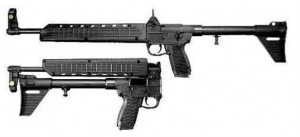 There is an entire category of guns on the market that would I advise against purchasing… pistol caliber carbines. These guns are fun and cheap to shoot but in terms of survival, they serve a very limited purpose. They aren’t capable of taking down large size game… and even if they were, the accuracy they offer doesn’t lend itself to more than a 50 yard shot (at best… the effective, accurate range of these weapons is probably 25 yards). The one advantage I see to having such a gun is concealability and magazine compatibility with a hundgun. The Keltec Sub 2000 is a prime example… it offers several models that take magazines from glocks, smith and wesson, etc. I would rate these guns as a D on my scale… if anything, they are a BUG (back up gun). You may find it useful to keep one of these carbines in the trunk of your car (where legal)… but I wouldnt rely upon it as a primary personal defense weapon or hunting tool.
There is an entire category of guns on the market that would I advise against purchasing… pistol caliber carbines. These guns are fun and cheap to shoot but in terms of survival, they serve a very limited purpose. They aren’t capable of taking down large size game… and even if they were, the accuracy they offer doesn’t lend itself to more than a 50 yard shot (at best… the effective, accurate range of these weapons is probably 25 yards). The one advantage I see to having such a gun is concealability and magazine compatibility with a hundgun. The Keltec Sub 2000 is a prime example… it offers several models that take magazines from glocks, smith and wesson, etc. I would rate these guns as a D on my scale… if anything, they are a BUG (back up gun). You may find it useful to keep one of these carbines in the trunk of your car (where legal)… but I wouldnt rely upon it as a primary personal defense weapon or hunting tool.
I hope this writeup has helped some of you “firearm challenged” folks look in the right direction. Look for other posts in the coming weeks dealing with shotguns, handguns, and plinkers.

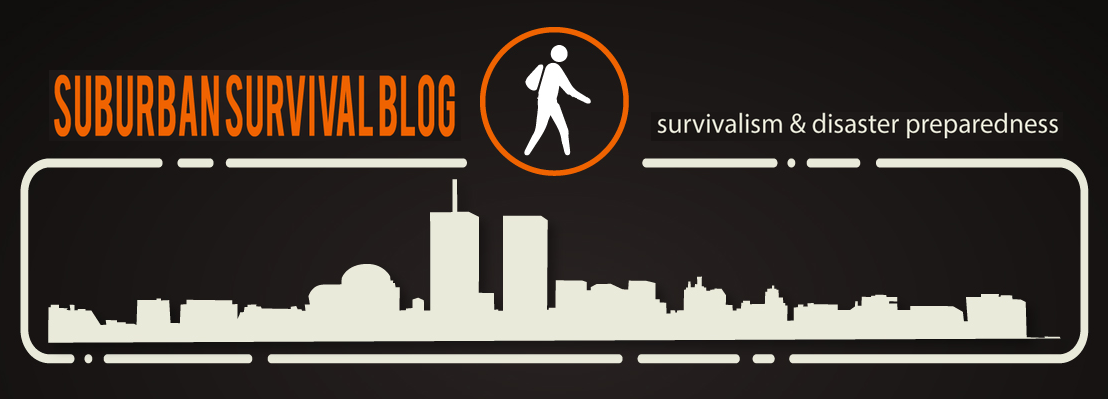

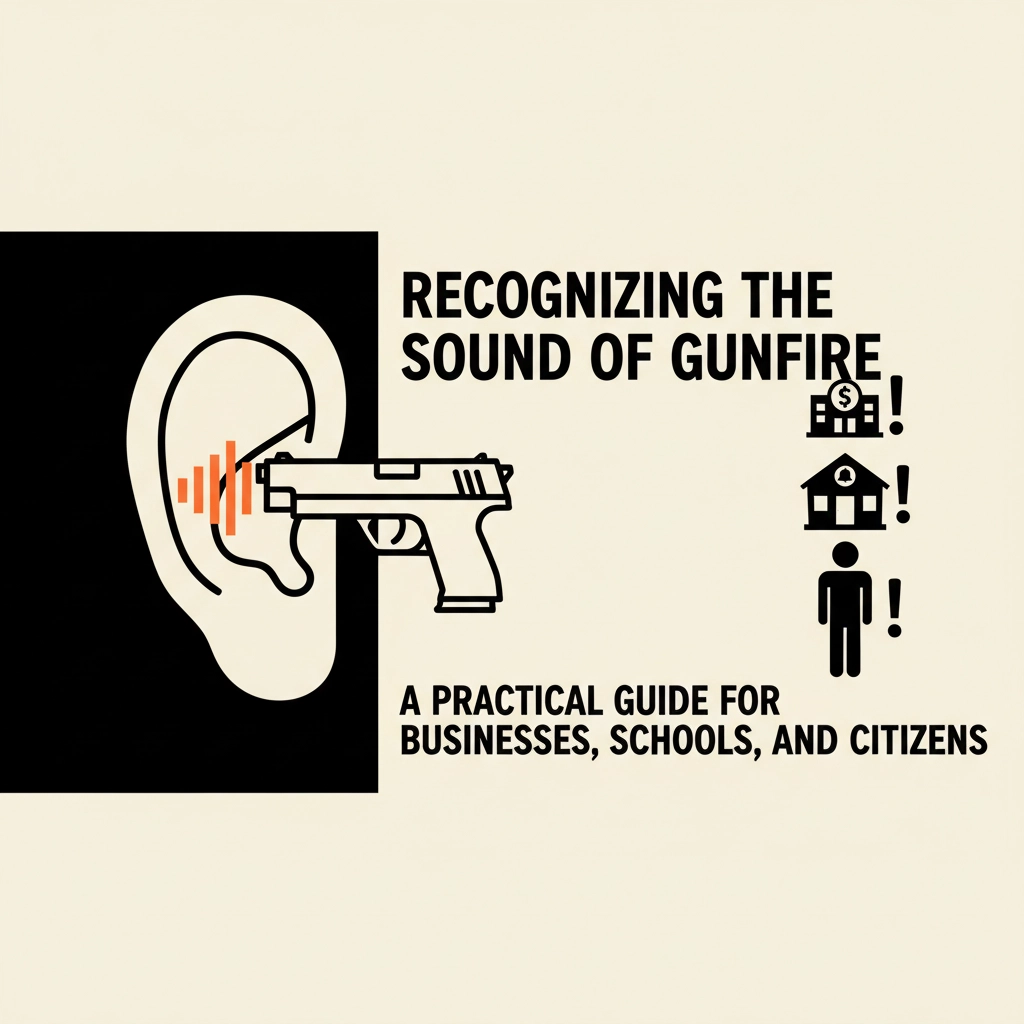
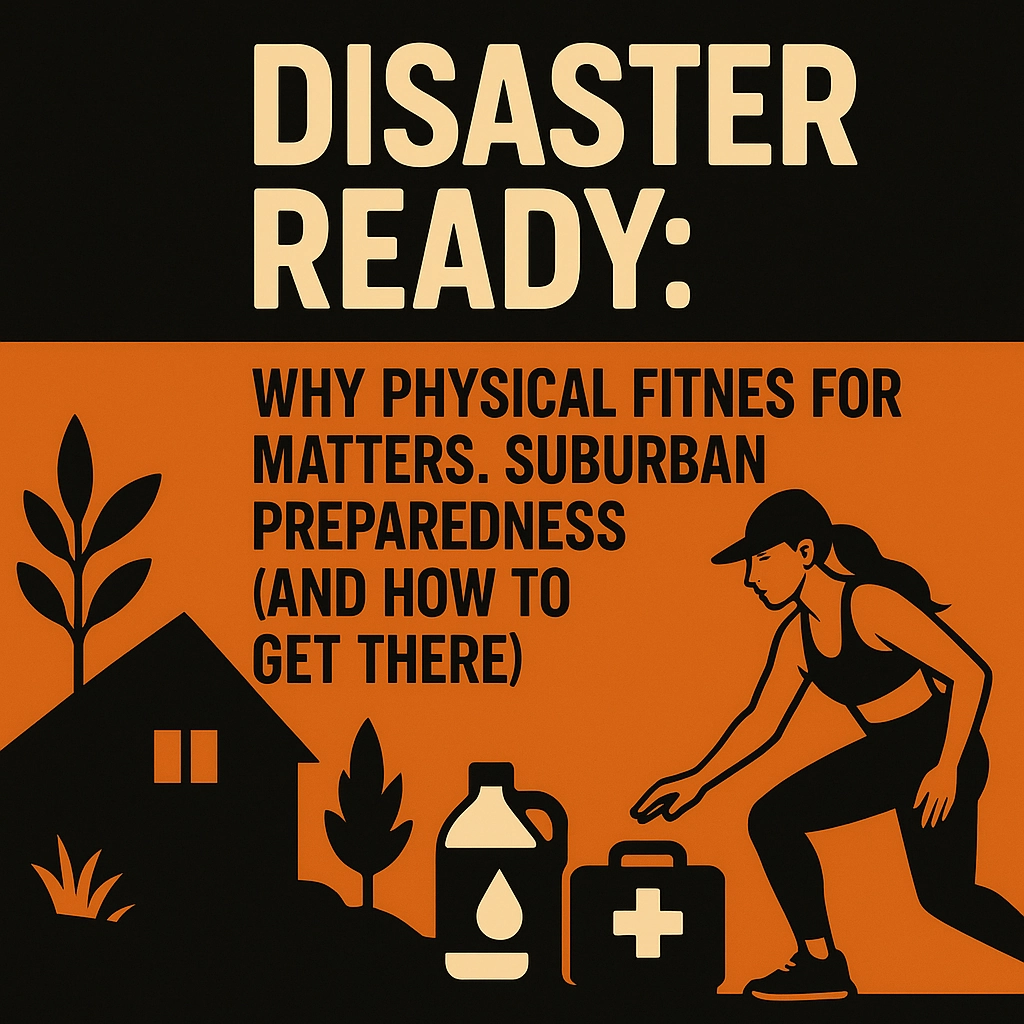
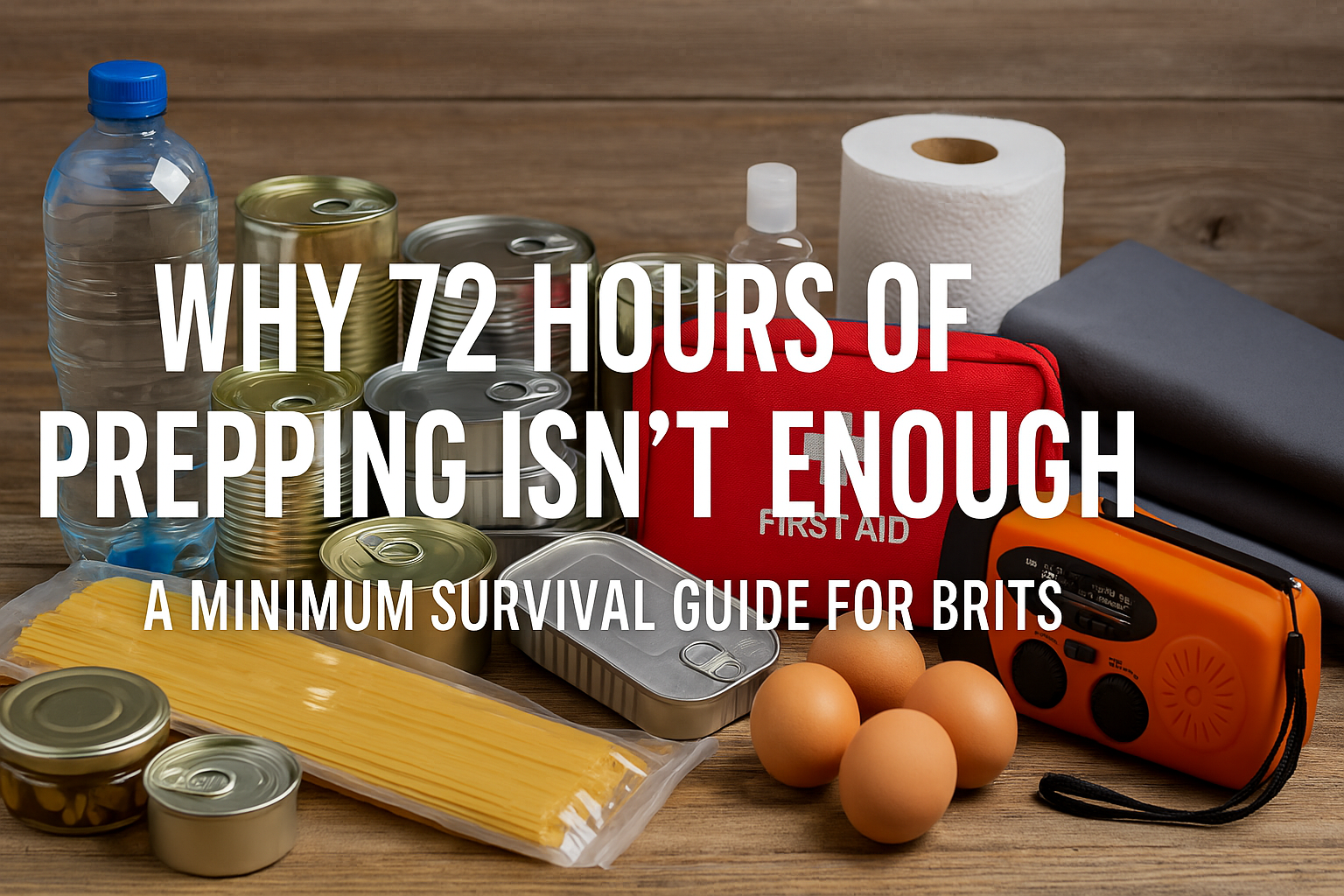



Great post! Regarding the AR, I’m sure there are plenty of bodies buried around the world with 5.56 holes in them. Perfect round? No. But I’m not sure its so weak that people can wrap themselves in something heavier than a window curtain (burlap bag?)and be protected!
I like the AK + clones for ease of use, price, ergonomic enough, easy to care for — (or don’t care for it — the thing will still run!) and relative cost.
Dont let my sarcasm confuse you… the 5.56 is a great round and does plenty of damage but doesnt have the terminal energy to punch through sheet metal (or a few layers of sheetrock) like a 30 cal would.
And yes, the AK is an awesome gun… if you add some aftermarket accessories, the ergonomics (which suck) arent such an issue.
I think the AK is plenty ergo for the most part, and there’s not much I would do to change them. To me, everything is just where one would expect, and as a lefty, I find them much easier to run than the AR.
I think the SKS is a great one to have in a place like NJ where it looks less evil than the AR or AK. Except for the bayonet, it could pass as a ‘normal’ target rifle. Not as easy to operate as you mention, but those things are built very well!
Good article. But let’s come back down to the real world.
I just can’t see the need for this level of firepower in an urban or near-urban setting. Even a suburban setting. Rual at the most.
If things get sooooooooo bad in an urban/near-urban/suburban area and you’re still there then you’re al ready well in a world of hurt! And your chances IMO for your long term physical survival are not good.
I would think a good pistol and a good shotgun would do you better and be cheaper.
@MasterPo — I think there are more posts to follow regarding other options like shotguns. This one was just covering some popular carbines if one were trying to decide on one.
You make good points, but I’m confused about the ‘level of firepower’ thing. I mean, the SKS holds 10 rounds, not much more than a ‘combat’ shotgun. Not much disparity there.
I don’t want to get into a debate about calibers, stopping power, etc etc. Simply that an AK or AR style rifle inherently is a more “firepower” weapon than a shot gun. I’m not familiar with the SKS style rifle but there is a reason why the world’s military is equipped SOP with an AK or AR rifles, not shot guns (yes, I know how powerful a shot gun can be at close range).
The inherent power of the caliber and the sheer ‘statement’ it makes are a package totally different from a shot gun.
It’s a subjective thing but that’s how I feel.
When TSHTF, I think it’s very wise to have a good carbine in an urban/suburban area. Larger concentrations of people, more chance of riots, mobs, etc. 20–30 rounds would be good. Any of these would be fine in that scenario, even the pistol caliber carbines. The AR, M1A, Mini, and SKS would be preferred out to intermediate ranges. Also consider the Kel-Tec SU-16C carbine, which uses AR mags for sub $600.
Other notes;
The AK-47 isn’t actually a “battle rifle” as that refers to full-sized rather than intermediate rounds, like 7.62 NATO, etc. It is the most widely manufactured assault rifle, and uses a long-stroke piston. Accuracy past 100 yards isn’t very useful in most – minute of SUV. This is due to the thinner barrel and slightly off-center bolt group.
The M1A is a battle rifle, not a carbine.
The Mini-14 has been known for its legendary inaccuracy but also legendary durability/reliability. Review after review notes how they keep on going, uncleaned for years with the Garand-based action and long-stroke piston. About five years ago, Ruger finally retooled the Mini-14 works and gave the rifle a thicker barrel — accuracy now approaches the AR (and out to 300 yards), and durability/reliability the AK. The front sight post now has wings as well. Available for under $600 from CDNN, but 30 round mags are ~$35;
http://suburbansurvivalist.wordpress.com/2011/01/26/review-ruger-mini-14-tactical/
The SKS is a Russian — rather than Chinese — rifle, made in many eastern bloc countries. Reliable 30 round detachable mags available from Tapco, though they won’t fit in most AR/AK mag pouches. Also a piston rifle.
Let me clarify a few things (without appearing to get into a pissing contest about who knows more about firearms). I realize there are differences between a traditional battle rifle (M1 Garand, M14, FN FAL, etc) and the modern long arms issued by military forces around the world (M16, Isreali Tavor, etc). I use the term battle rifle as a generic term and dont wish to confuse anyone with the actual definition of a carbine as opposed to a full battle rifle. If I were to make such a distinction, I would need to include in this writeup guns like the Enfield, Springfield 1903, or the Mosin Nagant… and compare the shortened versions of each. For example, the M1A and the M1 Carbine. Although the M1 carbine may serve someone well, it isnt a widely accepted platform as are the bolt action rifles I mentioned.
I stand by my review of the Mini 14/30. The platform has its place in a survivalists armory (I own one an wont part with it) but it just doesnt hold up to use (and abuse) that other weapons platforms do. The fact that Ruger reworked the gun says something… and comparing the gun to an AR says something as well… it is a substandard weapon platform.
You are correct that the SKS is a Russian designed firearm… and during the cold war, production was allowed by many communist block countries. The ones for sale in the US market have markings and unique characteristics from a wide variety of countries (Yugoslavia, Russia, China, etc)… for whatever reason, the ones I have seen most commonly are chinese.
Keep in mind, the purpose of this article is to introduce the novice firearm owner to the most readily available rifles on the US market that will fit the same purpose (for the most part). It isnt a comprehensive work… if anything, it is a good starting point for future research. And its also based upon personal experience and opinion as much as fact.
Masterpo, the benefit of a carbine vs a shotgun are effective distance and rate of fire… the shotgun just doesnt compare to a carbine for those two reasons and needs to be in a catagory of its own… both have a place in a survivalists armory. I’ll elaborate on shotgun uses in an upcoming article.
Cam,
Since the post is geared towards novices, using proper terminology rather than the popular misuse of a term might be a consideration. With this post title/subject, I’d expect to see the M1 carbine, though.
As for the Mini-14, I’ll stand by my comments on durability and reliability. I understand the fact that your experience with a Mini-14 left something to be desired. One data point, one fact. That the Mini is substandard is an opinion, not to be confused as a fact.
My advice for those considering the Mini-14;
#1 Do your own research, read all that is available – note that you’ll need to filter much of that due to a lot of misinformation.
#2 Focus on the newer Minis (580 and 581 series with thicker barrels, specifically the Tactical model), but read reviews/discussion of the older ones to learn the true track record in regard to durability/reliability.
#3 When reading review/comments about them, disregard comments from those who speak to the accuracy/reliability/durability who have not actually shot them (“I haven’t shot the X rifle, but…”). There are a lot of AR worshippers/Mini haters out there.
#4 Email/talk to those who have them, ask direct questions on forums to those with experience with the weapon.
For a good thorough review, see the Nutnfancy review of the Mini-14 Tactical (done after the Homestead Defener series of Mini reviews).
I read about them for months before settling on the Mini-14. Although I had a lot of experience with most of the other carbines and rifles I considered, I read up on them as well. For those that do the research, I believe you’ll find that the reputation of the Mini-14, old and new, for durability and reliability is outstanding (accuracy for older ones poor, for newer very good). One reason Mini-14 parts are scarce; they don’t break that often.
In a TEOTWAWKI situation, I want a carbine that is low maintenance, accurate, durable, and reliable. The AR is accurate, ergonomic, and very customizable, but most of us aren’t going to have an armorer’s shop to maintain our weapons when things go wrong (as the often do), as I’ve had in all my units/deployments.
I was seriously considering a Mini-14 or 30 for a carbine as it does not look as tactical and military as the AR or AK. I have a home situation such that I need to manage perceptions. Also the price and maintenance of an AR kind of dissuades me. I have other gun purchases to make so it will likely be a couple of years before I can convince my bride I need a .45, a .22 rifle and then a Mini-30. I am working on her, but am not there yet.